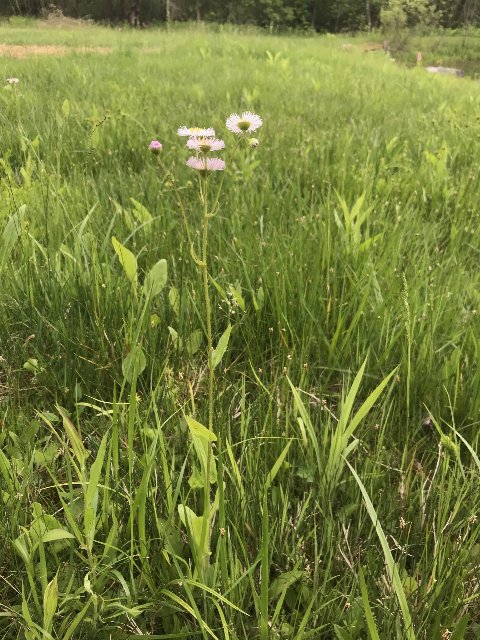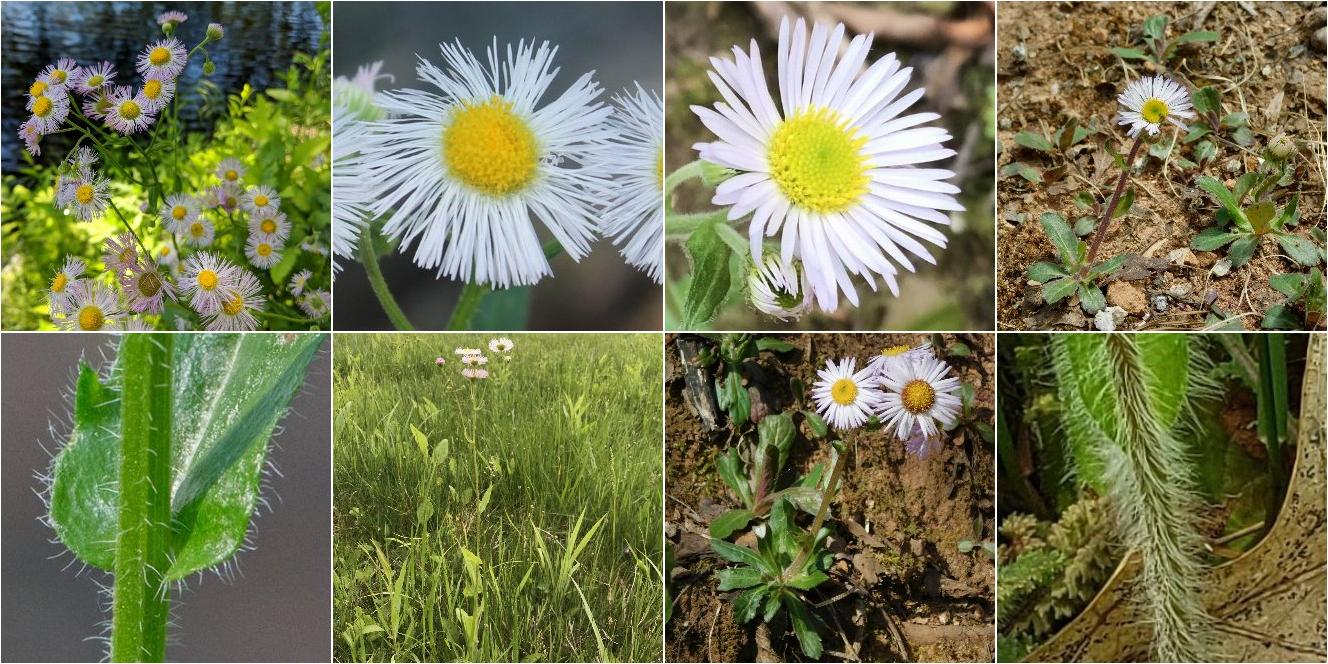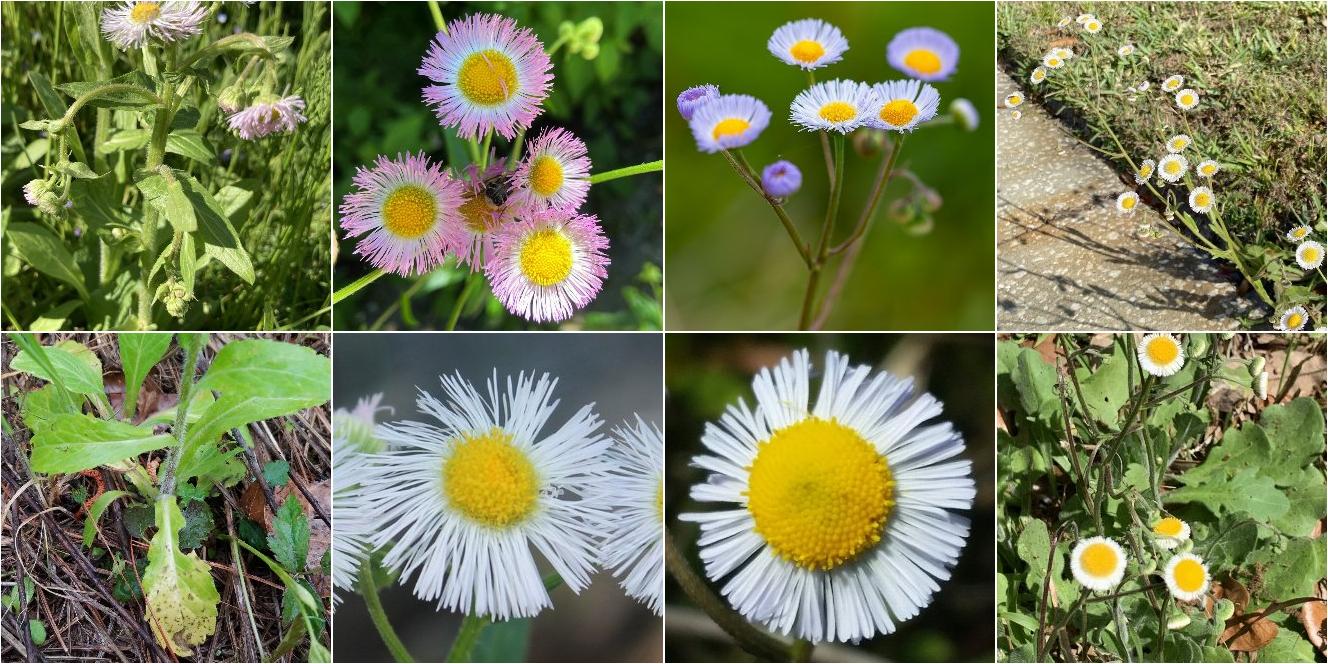Philadelphia Fleabane (Erigeron philadelphicus) vs. Robin's Plantain (Erigeron pulchellus)
Updated May 16th, 2023These two species can be confused, as both have abundant basal leaves and clasping leaves along the stem, both can be found in lightly-shaded habitats, and they have overlapping bloom times. They are easily distinguished by flowers, and they also have little overlap in habitat, although differences in habitat may require close observation. E. philadelphicus has a broader range, is more common and widespread, and is found in a wider range of habitats, preferring moister, more disturbed habitats with richer soils, tolerating poor drainage, and ranging into full sun. E. pulchellus is more restricted to drier, less-disturbed, lightly-shaded habitats, in soil of low fertility.






